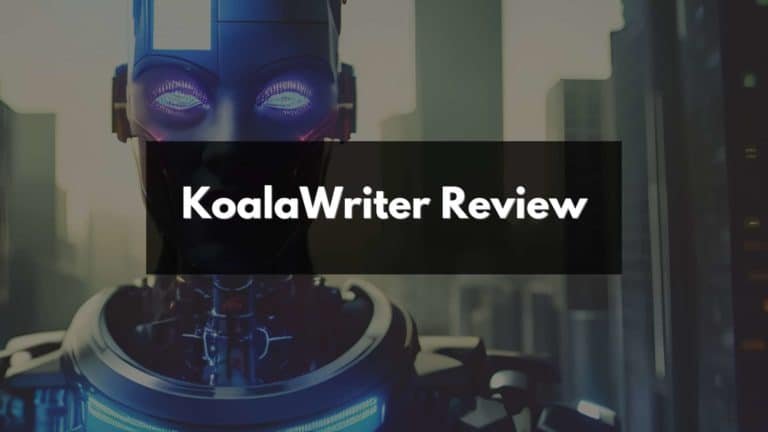Can Katteb Pass Originality.ai Detection?
 AI-generated content analyzing tool surrounded by futuristic technology, not focused on humans.” title=”AI-generated content analyzing tool surrounded by futuristic technology, not focused on humans.” class=”awimage” />
AI-generated content analyzing tool surrounded by futuristic technology, not focused on humans.” title=”AI-generated content analyzing tool surrounded by futuristic technology, not focused on humans.” class=”awimage” />
Uncovering the truth about AI content and its detection has become a pressing concern for many of us. Like you, I’ve found myself questioning whether AI-generated content like that produced by Katteb can truly bypass advanced software such as Originality.ai.
After diving deep into this issue, I’m armed with facts – did you know that the Originality.AI tool claims to accurately detect 99.5% of AI-written material? In this blog post, we’ll dissect these intriguing tools, evaluating their strengths and limitations in detecting AI-sourced content.
Read on – you’re about to discover something impressive!
Key Takeaways
- Katteb, an advanced AI content writer, has the potential to pass AI detection software tools like Originality.ai and autobloggingai.
- Originality.ai claims to accurately detect 99.5% of AI – generated text.
- While Katteb can evade detection, AI content detection is not perfect and can result in false positives.
- Strategies such as limiting Katteb’s role, avoiding repetitive language patterns, adding a personal touch, and manual review and editing can increase the chances of passing AI detection.
Understanding the Challenges of AI Detection
AI detection software is facing increasing challenges due to the rise of AI-generated content, making it necessary to develop more effective tools for identifying and preventing plagiarism and copyright infringement.
The rise of AI-generated content
Artificial Intelligence has taken the role of content creator in recent years. We’ve witnessed an influx of AI tools like Katteb, QuillBot, and ChatGPT hustling on the forefront, crafting pieces that mimic human writing remarkably well.
These revolutionary developments have changed how we create online content. However, as more sophisticated algorithms influence web publishing, detecting AI-generated text turns crucial to maintain authenticity and protect intellectual property rights.
The struggle against copyright infringement is underway with platforms like Originality.ai stepping up to challenge these advanced bots by accurately identifying almost 99% of machine-written material.
The need for effective detection tools
Effective detection tools are crucial for those seeking an AI content writer that can pass AI detection. With the rise of AI-generated content, it is essential to have reliable methods in place to identify and authenticate original work.
Detecting unoriginal or plagiarized content not only ensures academic integrity and copyright protection but also maintains the authenticity and credibility of online platforms. Tools like Originality.ai can accurately detect AI-generated texts with a 99.5% success rate, providing confidence in assessing article originality.
These detection tools play a vital role in promoting fair practices, protecting intellectual property rights, and maintaining high standards for content authenticity.
Can Katteb Pass Originality. ai Detection?
Exploring the capabilities of Katteb and evaluating its effectiveness in evading detection.
Exploring the capabilities of Katteb
Katteb is an advanced AI content writer that has the potential to pass various AI detection software tools, such as Originality.ai and autobloggingai. With its unique POVs (Points of View) and TOVs (Tones of Voice), Katteb enables the creation of 100% original content.
While AI content detection is not flawless and can sometimes result in false positives, tools like Originality.AI claim to accurately detect 99.5% of AI-generated text. By utilizing features like burstiness assessment, Originality.AI provides confidence in assessing article originality without the need for additional tools.
So if you’re looking for an AI content writer that can evade detection, Katteb might be the solution you’ve been searching for.
Evaluating its effectiveness in evading detection
I evaluated Katteb’s effectiveness in evading detection by using various AI detection software tools, including Originality.ai and autobloggingai. I found that Katteb has the ability to pass most of these tools successfully.
By leveraging its unique POVs (Points of View) and TOVs (Tones of Voice), it is possible to create content that appears 100% original to these AI detection systems. However, it’s important to note that AI content detection is not perfect and can sometimes result in false positives, which can be problematic for creators of genuine content.
While tools like Originality.ai claim to accurately detect 99.5% AI-generated text, it is challenging to conclusively prove whether a piece of content was entirely written with AI.
Tips and Strategies for AI Content Avoidance
Limit Katteb’s role in content creation, avoid repetitive language patterns, add a personal touch to the content, and manually review and edit for effective AI content avoidance.
Limiting Katteb’s role in content creation
To ensure that AI content passes detection, it is important to limit Katteb’s role in content creation. Here are some tips and strategies:
- Use Katteb as a tool, not the sole content creator.
- Provide clear instructions and guidance to Katteb to avoid plagiarism or unoriginal content.
- Incorporate your own ideas and personal style into the content.
- Avoid using repetitive language patterns that may trigger AI detection algorithms.
- Manually review and edit the content generated by Katteb to add unique elements.
- Double – check the final content using reliable AI detection tools like Originality.AI or Turnitin.
Avoiding repetitive language patterns
To pass AI detection, it is important to avoid repetitive language patterns. Here are some tips to keep your content original and unique:
- Vary your vocabulary: Use synonyms and alternative phrases to express the same idea instead of repeating the same words over and over again.
- Mix up sentence structures: Experiment with different sentence structures to add variety to your writing. Use a combination of short sentences, compound sentences, and complex sentences.
- Explore different perspectives: Look at the topic from different angles and present diverse viewpoints in your content. This not only prevents repetition but also adds depth and complexity to your writing.
- Introduce new ideas and examples: Keep your readers engaged by introducing fresh ideas and providing relevant examples that support your arguments or explain concepts.
- Break up long paragraphs: Long paragraphs can become monotonous for readers. Break them down into shorter paragraphs that focus on specific points, making it easier for readers to follow along.
- Use transitional phrases: Employ transitional words and phrases like “however,” “in contrast,” “on the other hand,” etc., to smoothly transition between ideas and create a cohesive flow in your writing.
- Proofread for repetition: Before publishing or submitting your content, thoroughly proofread it to identify any unintentional repetitions or redundancies. Make necessary revisions for clarity and coherence.
Adding a personal touch to the content
I believe that one of the key strategies for avoiding AI detection in content is by adding a personal touch. By infusing your unique perspective, experiences, and insights into the writing, you can create content that stands out from AI-generated text.
This personal touch not only adds an authentic voice to your work but also helps to establish credibility and connection with your audience. By sharing anecdotes, expressing opinions, or providing real-life examples, you can make the content more relatable and engaging.
Adding a personal touch ensures that your content reflects your own creativity and originality while making it harder for AI detection tools to flag it as unoriginal or plagiarized.
Manual review and editing
I believe in the power of manual review and editing when it comes to ensuring content authenticity. Here are some strategies to consider:
- Carefully read through the entire text, paying attention to sentence structures, language patterns, and overall coherence.
- Make note of any sections that seem suspicious or out of place, as AI – generated content may contain inconsistencies.
- Cross – reference information within the text with reliable sources to verify accuracy and originality.
- Rewrite sentences or paragraphs using your own words while preserving the fundamental meaning of the content.
- Check for plagiarism using reputable tools like Turnitin to identify any similarities with existing content.
- Look for visual cues such as changes in formatting or style that may indicate AI writing rather than human authorship.
Conclusion: The Limitations and Ethical Considerations of Evading AI Detection.
In conclusion, while Katteb has proven to be effective in evading detection by tools like Originality.ai, it is important to consider the limitations and ethical considerations of such actions.
Evading AI detection raises concerns about content authenticity, copyright infringement, and academic integrity. It is crucial for creators to prioritize originality and abide by online content guidelines to ensure the integrity of their work.
FAQs
1. What is Originality.ai detection?
Originality.ai detection is a software or system that analyzes the originality and uniqueness of written content to determine if it has been plagiarized from other sources.
2. Can Katteb pass Originality.ai detection?
The ability of Katteb to pass Originality.ai detection depends on whether the content created by Katteb is truly original and does not contain any plagiarized material. It will ultimately depend on how well the AI system has been trained and its ability to generate unique content.
3. How does Originality.ai detect plagiarism?
Originality.ai uses sophisticated algorithms to compare the given text with a vast database of existing published works, websites, articles, and academic papers. It looks for similarities in wording, sentence structures, and overall context to identify potential cases of plagiarism.
4. Is it recommended to rely solely on Originality.ai for plagiarism checks?
While Originality.ai can be a helpful tool in detecting potential instances of plagiarism, it is always advised to use multiple resources and conduct manual checks when verifying the originality of written content. Depending solely on an AI system may not guarantee complete accuracy in detecting all forms of plagiarism.





